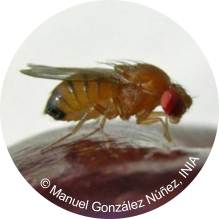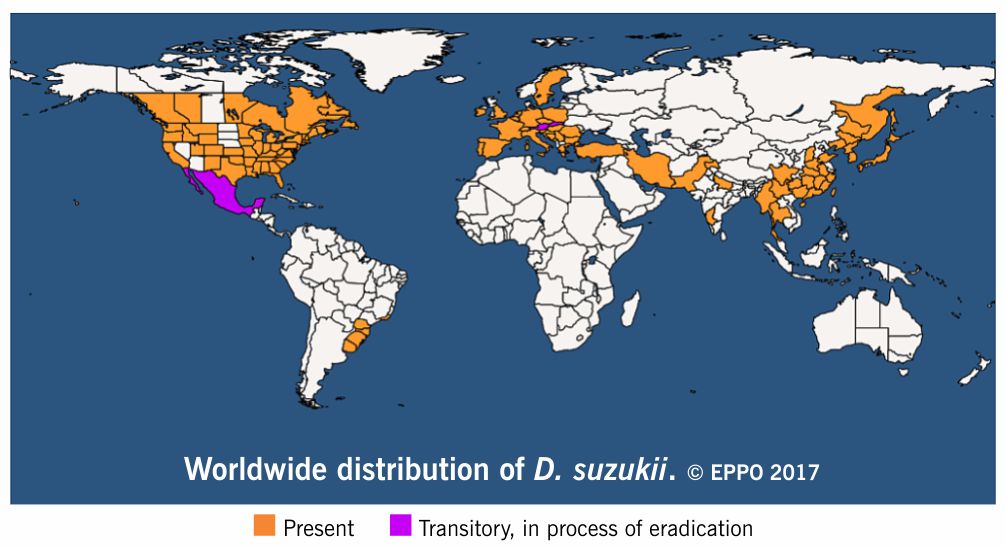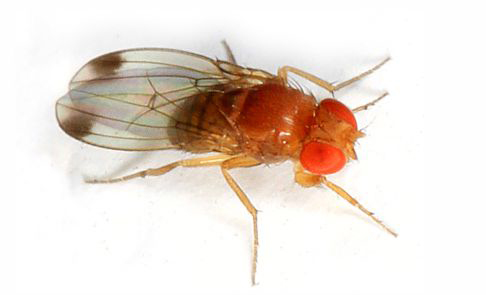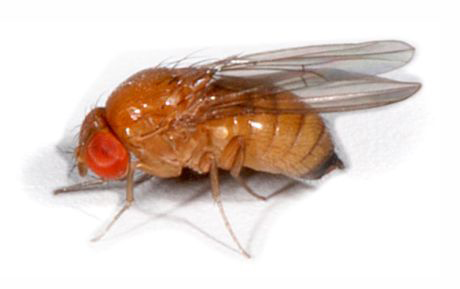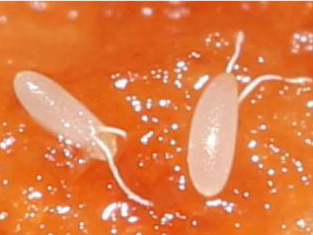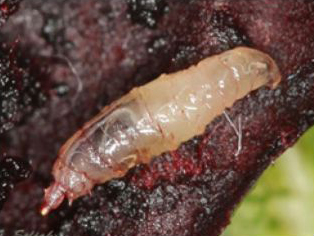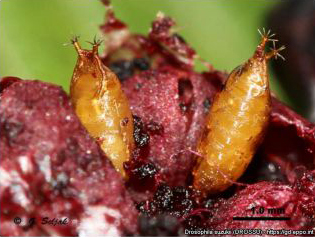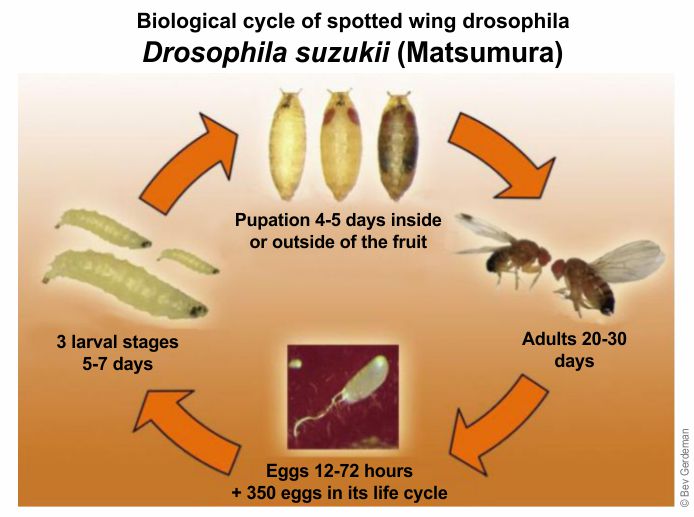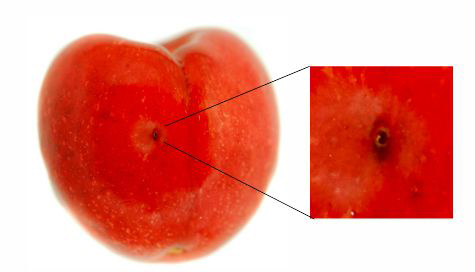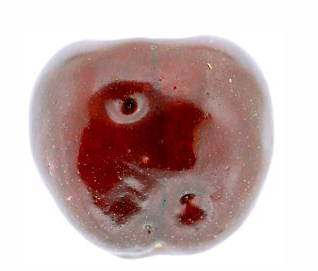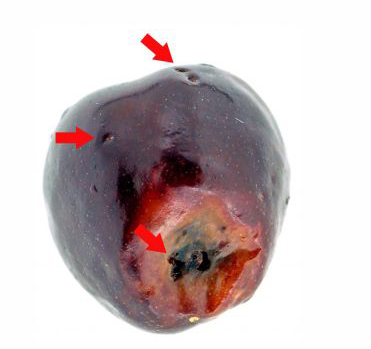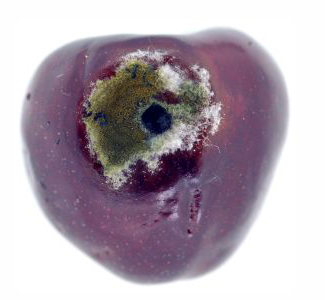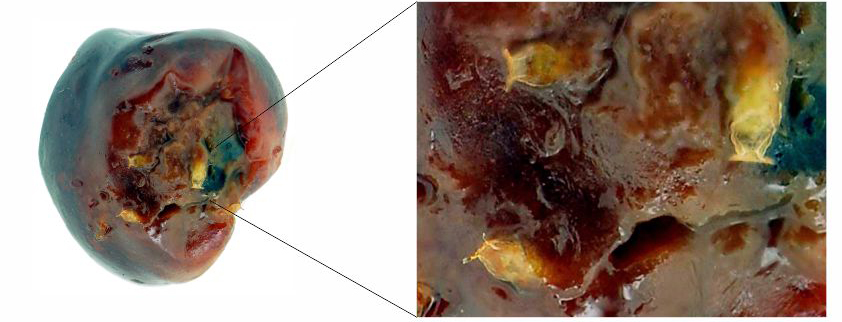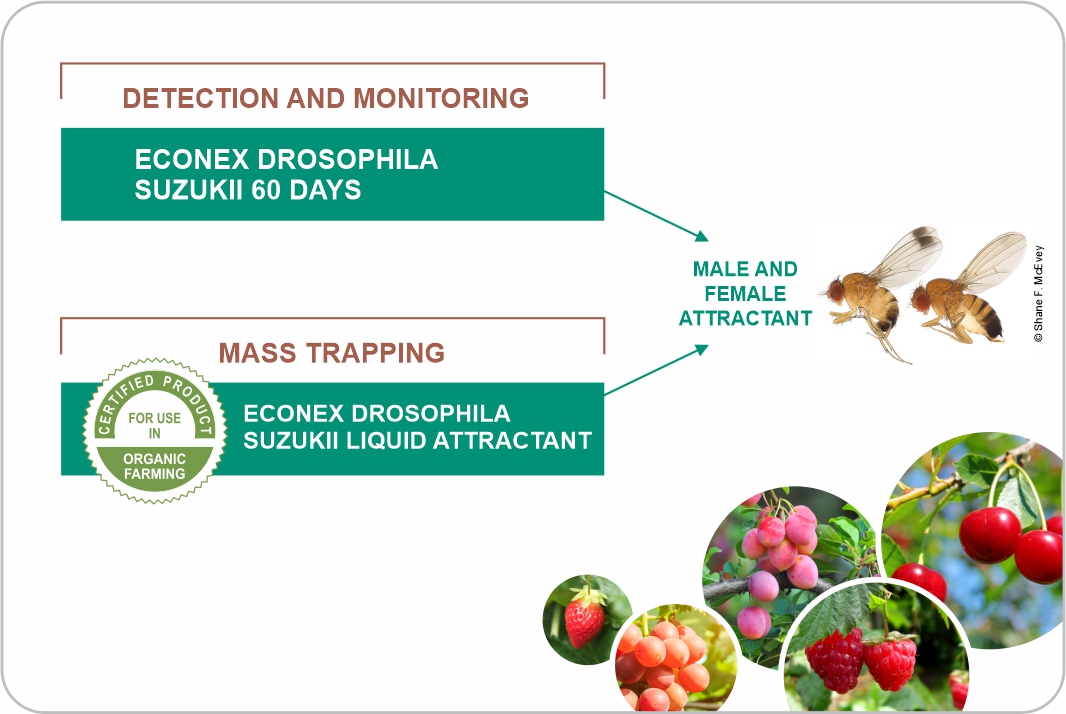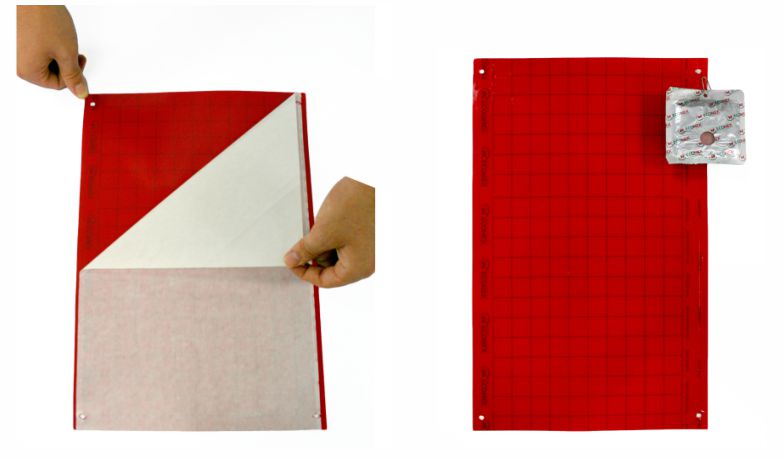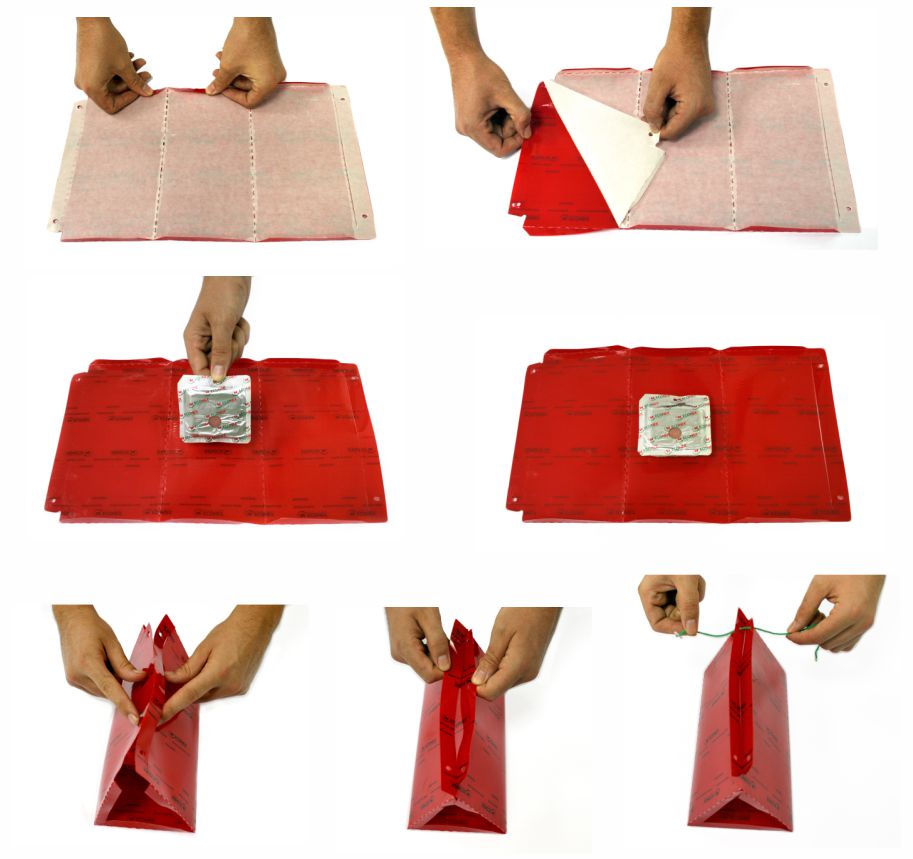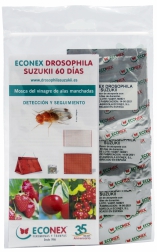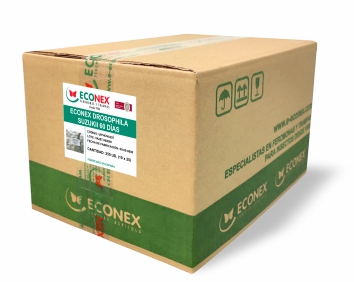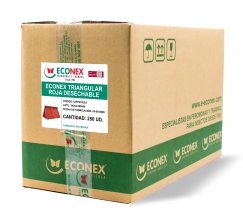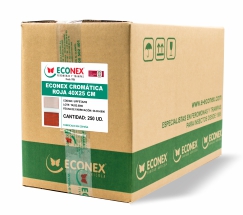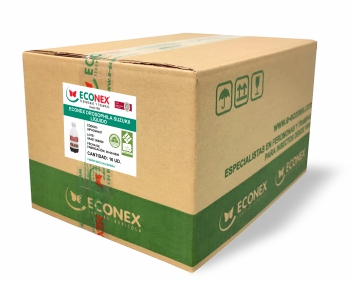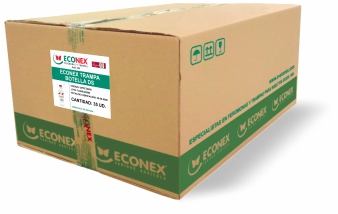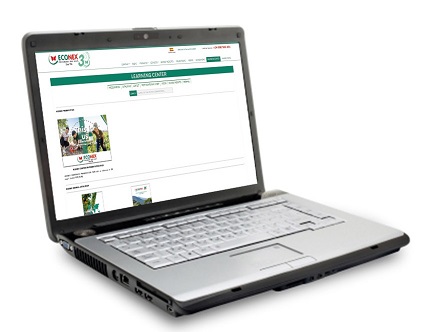ECONEX DROSOPHILA SUZUKII 60 DAYS
Food attractant diffuser for the attraction of both sexes of the species Drosophila suzukii, with a duration of 60 days in normal field conditions.
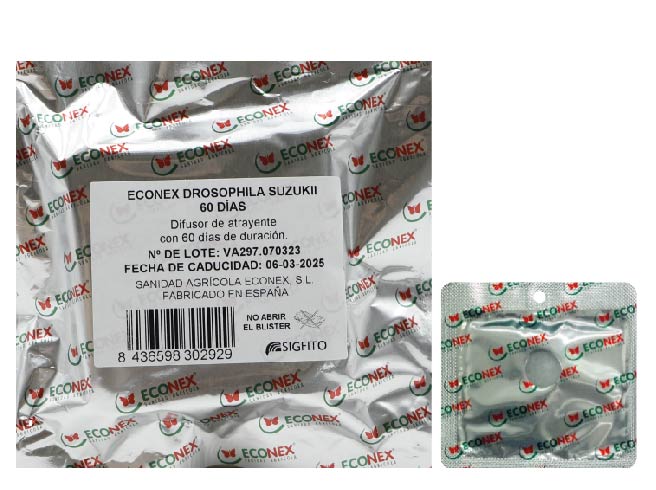
ECONEX DROSOPHILA SUZUKII 60 DAYS
Packaging, hanger and attractant diffuser.
Code: UIPHOVA297
OMDF register number (Ministry of Agriculture of Spain): 155/2017

The diffuser is individually packaged in an aluminium sachet with labelled specifications.
Once removed from the packaging, the diffuser needs no activation or opening, just placed correctly in the trap.
Detection and monitoring
1 to 2 traps per hectare, should be placed at the same height as the crops. The traps should be active at least 2 weeks before the flight period of the insect and 2 weeks after the flight period.
Necessary material
An ECONEX RED CHROMATIC 40 X 25 CM or ECONEX DISPOSABLE RED TRIANGULAR trap and an ECONEX DROSOPHILA SUZUKII 60 DAYS attractant diffuser.
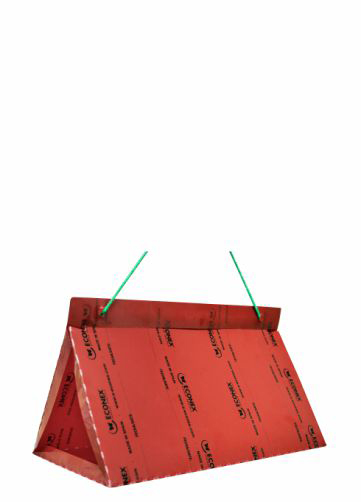
ECONEX DISPOSABLE RED TRIANGULAR
Code: UIPFETA253

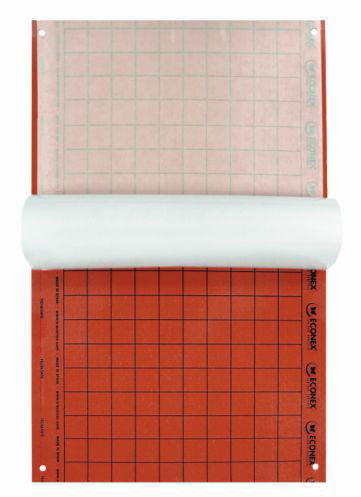
ECONEX RED CHROMATIC 40 X 25 CM
Code: UIPFETA252

The ECONEX RED CHROMATIC 40 X 25 CM trap is an adhesive chromatic trap consisting of a red polyethylene sheet that is resistant to light, coated on both sides with a solvent-free contact adhesive and protected by two strips of silicone paper, to retain the insects.
It has a hole in each corner so that installing the trap is easier.
Activation of the trap: take away the silicone paper that covers the adhesive and hang the diffuser from one of the holes on the trap, using the paperclip hanger provided.
Do not place the metallic part in contact with the adhesive.
The ECONEX DISPOSABLE RED TRIANGULAR etrap is made of a red polyethylene sheet that is resistant to light.
The inside is coated with a solvent-free contact adhesive and protected by a strip of silicone paper, to retain the insects. The trap comes with a paperclip hanger and has holes in the corners to be able to hang it.
The trap is presented unfolded, with measurements of 40 x 23 cm. Once folded, it is a prism shape, measuring 12 x 23 x 13 cm.
Set-up and activation of the trap: fold the trap along the dotted lines, without inserting the upper tab; remove the silicone paper that covers the adhesive and place the attractant diffuser (on the non-metallic side) in the centre of the adhesive sheet, where it will remain fixed because of the glue.
Insert the upper tab into the groove to fix the shape of the trap and place the hanger.
Both the ECONEX RED CHROMATIC 40 X 25 CM trap and the ECONEX DISPOSABLE RED TRIANGULAR trap stand out because they are easy to use and will remain operative until the attractant diffuser runs out or the adhesive surface has been saturated with insects.
Factors that influence in the number of traps needed
The pest population, bordering crops, level of control required, etc.
One important factor is the size of the plot. In small and irregular plots, a greater number of traps is required than in larger and more uniform plots.
Another important factor is the distance between plots that have Drosophila suzukii. In such cases, the plot borders must be reinforced and the number of traps per hectare increased.
STORING THE DIFFUSERS
The diffusers must be stored in their original packaging in a cool and dry place and separated from food and drinks.
To preserve the diffusers for long periods of time, it is recommended to keep them in the refrigerator at 4 o C in which case they will last for 2 years. Or they can be kept in the freezer at -20 o C for 4 years.
ECONEX DROSOPHILA SUZUKII LÍQUID
Liquid food attractant for the attraction of both sexes of Drosophila suzukii. It is used as bait inside the Drosophila suzukii. ECONEX BOTTLE TRAP DS traps.
They come in 250 cm³ bottles, with 190 ml of attractant.
Once the liquid attractant is in the trap, it has an approximate duration of 60 days in normal field conditions or until it shows signs of deterioration.
Mass captures
Install 50 to 100 traps per hectare.
On the borders of the plots, it will be necessary to place a barrier of traps separated 10 to 15 metres apart from each other.
Check the traps regularly to evaluate the condition of the attractant. If you observe signs of deterioration or the smell of putrefaction, remove it and wash the bottle with soap and water. Then dry the bottle, refill it with a new ECONEX DROSOPHILA SUZUKII LIQUID ATTRACTANT and install the trap again.
The traps must be active at least 2 weeks before the start of the target insect’s flight period and 2 weeks after.
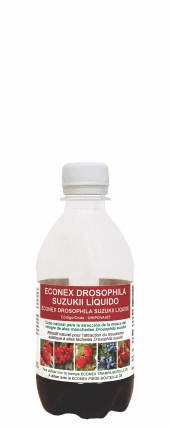
ECONEX DROSOPHILA SUZUKII LÍQUID ATTRACTANT
Code: UIPHOVA427
OMDF register number (Ministry of Agriculture of Spain): 028/2020

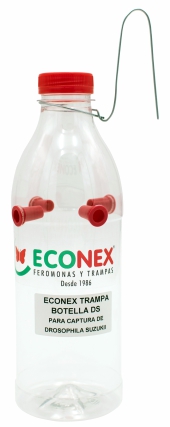
ECONEX BOTTLE TRAP DS
Code: UIPFETA268
OMDF register number (Ministry of Agriculture of Spain): 059/2020

The ECONEX BOTTLE TRAP DS is a disposable trap in the form of a bottle with a 1 litre capacity.
The bottle is made of PET and has 4 diagonal holes with red polypropylene cone-shaped inserts. These inserts make it easier for the target insects to enter through chromotropic attraction, as well as their funnel shape. At the same time, the inserts stop the target insects from escaping.
The trap is used together with the ECONEX DROSOPHILA SUZUKII LIQUID ATTRACTANT to capture individuals of the species Drosophila suzukii.
The trap is provided with a wire hanger that is specifically designed to be able to hang it from a branch or from another type of support.
Recommended use: Fill the bottle of attractant with water up to the line indicated on the label.
Opening the bottle cap may release pressure and a slight foam could form when filling with water.
Open the red bottle cap of the ECONEX BOTTLE TRAP DS trap and pour the contents of the already diluted attractant bottle inside it. Then hang it on the sunny part of a tree branch or on an artificial support between 1,5 and 2 m high.
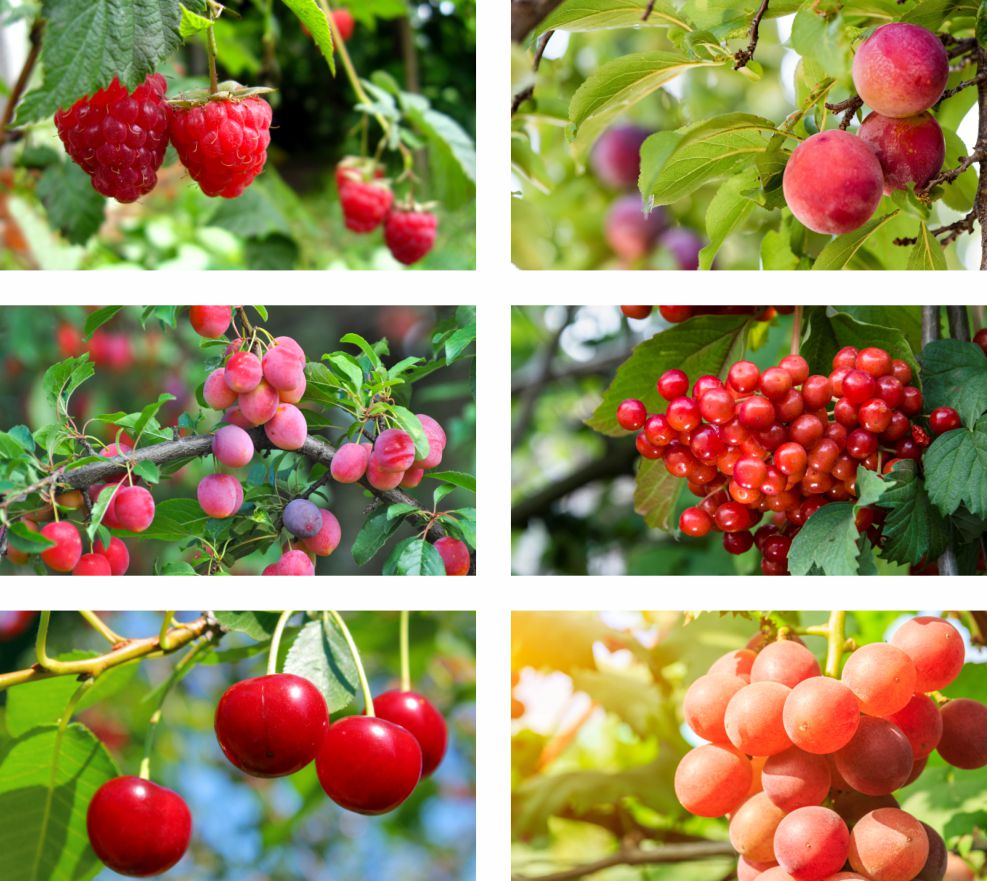
Factors that influence in the number of traps needed
The pest population, bordering crops, level of control required, etc.
One important factor is the size of the plot. In small and irregular plots, a greater number of traps is required than in larger and more uniform plots.
Another important factor is the distance between plots that have Drosophila suzukii. In such cases, the plot borders must be reinforced. Therefore, a density of at least 20 traps per hectare or more may be required in the case of mass captures.
